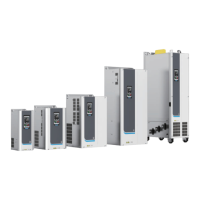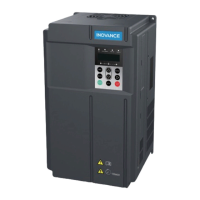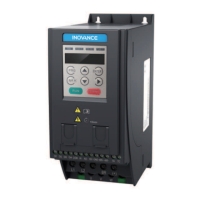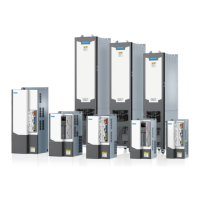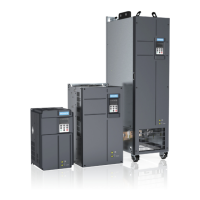Commissioning and Trial Run
‑78‑
32: Immediate DC braking
The terminal is used to switch the drive to the DC braking state. DC braking means the
drive outputs direct current to the stator winding of the asynchronous motor to form
a static magnetic field, enabling the motor to brake with energy consumption. In this
state, the rotor cuts the static magnetic field to generate braking torque, which stops
the motor quickly.
33: NC input of external fault
When an external signal is sent to the drive, the drive reports Err15.
34: Frequency modification function
When the terminal is active, the frequency can be modified. When the terminal is
inactive, the frequency cannot be modified.
35: Opposite to the PID action direction
The terminal is used to reverse the PID action direction defined by FA‑03 (PID action
direction).
36: External stop terminal 1
When the command is set through the operating panel (F0‑02 = 0), the terminal can
be used to stop the drive, which functions the same as the STOP/RES key on the
operating panel.
37: Control command switchover terminal 2
The terminal is used to switch the drive between the terminal control mode and
communication control mode.
● When the command is set through the terminal, activating the terminal switches
the drive to the communication control mode.
● When the command is set through communication, activating the terminal
switches the drive to the terminal control mode.
38: PID integral pause
The terminal is used to disable integral tuning of PID temporarily without affecting its
proportional and derivative tuning.
39: Switchover between main frequency X and preset frequency
The terminal is used to switch from main frequency X to the preset frequency (F0‑08).
40: Switchover between auxiliary frequency X and preset frequency
The terminal is used to switch from auxiliary frequency Y to the preset frequency
(F0‑08).
41 and 76: Motor selection terminals 1 to 4
The terminals are used to select a motor. For example, when function 41 of DI1 and
function 76 of DI2 are selected, motor 1 applies when DI1 and DI2 are inactive; motor

